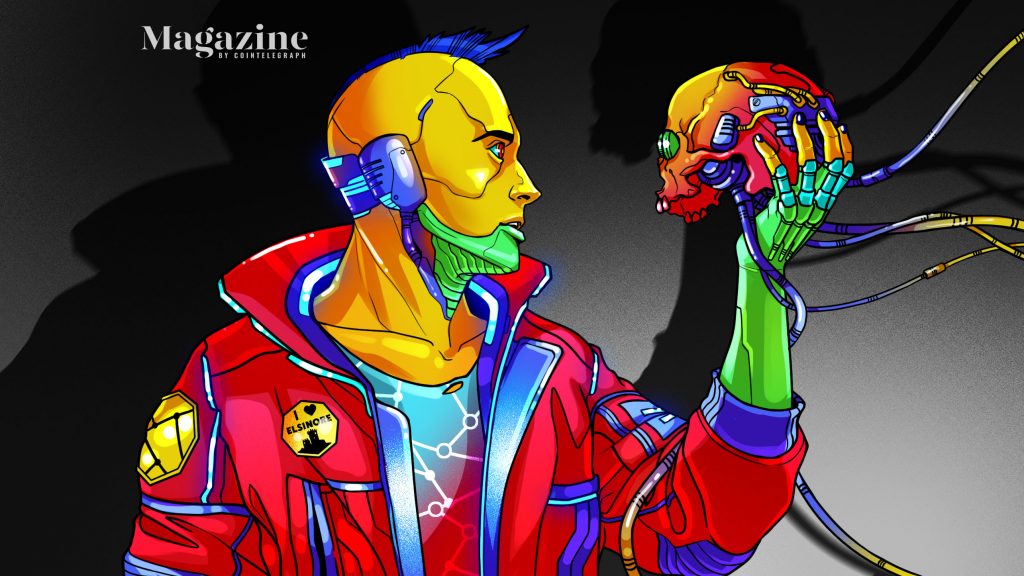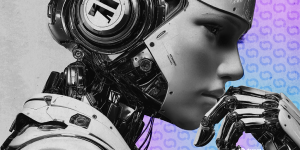Crypto leaders are obsessed with life extension. Here’s why – Cointelegraph Magazine

Ethereum co-founder Vitalik Buterin is on a mission to make humans immortal. Buterin, 27, proposes the idea that “aging is an engineering problem.”
He is not alone in his combined interest in Bitcoin and biohacking. Famous biomedical aging researcher Aubrey de Grey, Xanadu architect and Agoric chief scientist Mark Miller, Bitcoin Cash billionaire Roger Ver and former chief technology officer of Coinbase and a16z general partner Balaji Srinivasan, are all fascinated by the pursuit of longevity.
De Grey recently helped launch VitaDAO, a “decentralized collective funding longevity research.” He says:
“I have been gratified since the beginning of blockchain to see the enormous fanbase that I and the longevity movement have in there.”
Miller, alongside his engineering hall-of-fame accomplishments, is a senior research fellow at the Foresight Institute, a not-for-profit founded in 1986 with the aim of “advancing technology for the long-term benefit of life.”
“I’m very much involved in this new world of crypto commerce, often referred to as the blockchain sector,” he says. “I’m very hopeful about that as creating an ecosystem in which secure software will dominate because insecure software results in massive losses quickly, with no recourse.”
Srinivasan’s Twitter bio describes his vision as: “Immutable money, infinite frontier, eternal life. #Bitcoin.” Srinivasan states that “the ultimate purpose of technology is to eliminate mortality” and “life extension is the most important thing we can invent.”
Blockchain communities are clearly excited about longevity. But what does cryptocurrency have to do with life extension, and where might this future be headed?
It turns out that the link between crypto and cryogenics stretches back to core contributors, and the Cypherpunks mailing list and its links to transhumanist groups, including the first person to transact Bitcoin with Satoshi, Hal Finney.
If we’re being more open minded about accepting new weird ideas, can I suggest anti-aging research? Aging is a humanitarian disaster that kills as many people as WW2 every two years and even before killing debilitates people and burdens social systems and families. Let’s end it.
— vitalik.eth (@VitalikButerin) March 30, 2020
Crypto people are funding longevity research
Crypto philanthropists are donating significant wealth to this area, which is typically difficult to garner mainstream support for. They may be the only people on the planet optimistic enough to fund tech that currently only exists in sci-fi novels.
According to Buterin, longevity is a battle worth fighting for. Buterin donated $25 million in SHIB cryptocurrency tokens to the Future of Life Institute in June 2021 and has donated over $350,000 to the SENS Research Foundation to “reimagine ageing”.
He discussed the topic in recent podcast interviews with the likes of Lex Fridman and Tim Ferriss saying that “life extension is definitely really important to me.”
“I think I hope to see the concept of seeing your parents and grandparents die just slowly disappear from the public consciousness as a thing that happens over the course of half a century.”
Buterin has emphasized his adherence to the moral philosophy of effective altruism. This value, known to transhumanists as the moral urgency of saving lives, is perhaps what motivated his donations of dog coins to both COVID-19 relief in India and life-extension.
“Just even the process of aging turning into something that just becomes reversible and it being a regular thing for people to live one and a half, two centuries and then go even further from there,” Buterin states.
Pinned in Buterin’s Twitter is an essay called “The Fable of the Dragon Tyrant” by professor Nick Bostrom, director of the Future of Humanity Institute. It argues that allowing death from old age is unethical. If you view aging as a disease, the urgency to support the transhumanist project also makes sense.
“While we still lack effective and acceptable means for slowing the aging process, we can identify research directions that might lead to the development of such means in the foreseeable future,” states Bostrom. The key to freeing humanity from the dragon tyrant of aging, is funding. The new riches from crypto are key.
Bitcoin.com founder Roger Ver has already signed up to be cryogenically frozen. “Rather than investing in cryptocurrency stuff, I want to focus on the extreme life extension technologies, because if you die, you can’t enjoy your life anymore,” Ver told Cointelegraph. He’s so confident in the tech, he even considered being cryogenically frozen as a legitimate alternative to going to prison in 2002.
Roger Ver once considered killing himself and going into cryonic suspension to avoid prison.
Now he plans to spend the next phase of his career — and his fortune — making cryonics a reality. https://t.co/IZ1Ham7NEa
— Cointelegraph (@Cointelegraph) April 28, 2021
DAOs are also taking part in this life extension renewal. “There is a strong overlap of crypto people and longevity people,” Vincent Weisser, core team member at VitaDAO tells Cointelegraph. VitaDAO exceeded its token raise funding target of $490,000 in June 2021.
Now, they are working with popular blockchain crowd-funding platform Gitcoin to include a future funding category for longevity and life extension.
Transhumanist philanthropy and funding at scale holds the potential to significantly impact longevity research and the transhumanist project.
What is transhumanism?
Transhumanism is a loosely defined movement that promotes the use of technology to enhance the human condition. This includes information technology, genetic engineering, and artificial intelligence for radical extension of human lifespan, augmentation of physical and intellectual capacities, space colonization, and super-intelligent machines.
The goal is not just life extension, but “more,” to the point of becoming superhuman. Although the transhumanist pursuit of post-humanity is often thought of as medical, the gambit of transhumanist technologies includes economic and social institutional design and cultural development.
Like crypto communities, transhumanism is grounded in a vision of evolution and individual freedom of choice. In practice, this leads to a sense of personal responsibility for contributing to solutions, such as biohacking or making provisions for being cryogenically frozen and one day hopefully reanimated. The goal of the transhumanist project for society is one based on freedom in determining social arrangements, enabled by self-generating systems and spontaneous order. This description of perpetual, open systems is similar to blockchain.
Not everyone thinks eternal life, or the philosophy underpinning it, is a good idea. Political economist Francis Fukuyama calls transhumanism “the most dangerous idea in the world” and argues it is “a strange libertarian movement” whose “crusaders” want “nothing less than to liberate the human race from its biological constraints.” He lists the risks of the fraught nature of humankind to want to live forever, the effects on equality between the “haves” and the “have nots,” and that the essence of humanity is mortality. Yet, transhumanism has a long history in crypto communities.
More human than human
Transhumanist values are reflected in the ideological underpinnings of blockchain communities around anarchy and autonomy, self-improvement, and a long-term mindset.
Transhumanist ideas have long existed in the technology communities that pioneered the core tenets of public blockchains. For example, cryptography pioneer Ralph Merkle (inventor of public key distribution and Merkle trees) considered himself a transhumanist, publishing on such matters as “The Molecular Repair of the Brain.”
Furthermore, there was substantial cross-pollination of ideas between the Cypherpunks mailing list, which discussed ideas on privacy and digital cash throughout the 1990s and 2000s in the lead-up to the invention of Bitcoin in 2008, and the Extropian mailing list.
Extropy is “the extent of a system’s intelligence, information, order, vitality, and capacity for improvement.” According to 1998’s “Principles of Extropy” published by president of the Extropy Institute, Max Moore, extropians are “those who seek to increase extropy.” The core principles, refined in “The Extropist Manifesto” in 2010, are “endless eXtension,” meaning perpetual growth and progress in all aspects of human endeavor; transcending the restrictions of authoritarianism, surveillance, or social control; overcoming property rights, including IP and money, by sharing knowledge, culture, and resources; intelligence, including independent thinking and personal responsibility; and smart machines, specifically the attainment of “Friendly Artificial Intelligence” that exceeds human ability, through funding and favorable legislation.
Extropians advocate and explore the philosophies of transhumanism (technological enhancement), extropy (improving the human condition), and the future. Numerous prominent cypherpunks also subscribed to the Extropian mailing list, including co-founders of the cypherpunk movement Timothy C. May and Eric Hughes.
Here’s my conversation with @VitalikButerin, his second time on the podcast. We talk about @Ethereum, @Bitcoin, @Dogecoin, @elonmusk, @ShibainuCoin, @IOHK_Charles, @Cardano, @Chainlink, @0xPolygon, life, immortality, AI, and even speak Russian at the end. https://t.co/Y3cjGuctvM pic.twitter.com/Pu7uwwF6X4
— Lex Fridman (@lexfridman) June 3, 2021
Another active member of the extropians was Hal Finney. Finney was co-developer of the first anonymous remailer, the first person to transact Bitcoin with Satoshi and the first maintainer of the Bitcoin codebase. He was cryogenically frozen when he passed away in the hope of living in the future alongside his wife, Fran, who noted that “Hal liked the present. But he looked towards the future.” For this community, technologies like digital cash offered a way of long-term thinking about the future of humanity, transhumanism, and solutions and preventions for cryogenics, outer space, and catastrophic environmental or societal collapse.
The cypherpunks’ interest in extropianism, and vice versa, was concerned with building infrastructure today that would sustain the future of human evolution. In some ways, this makes sense.
In order for one’s cryogenic suspended animation to be paid for, maintained and reversed to wake them up in the far-flung future where science advances to the point where this aspiration is realized, there needs to be an incentive. In 1994, Wired magazine reported over 27 frozen people (technically 17 frozen heads and 10 entire bodies) at the Alcor Life Extension Foundation, the same company that Roger Ver has signed up with.
“Immortality is mathematical, not mystical,” stated Mike Perry, their overseer. The hope is that Bitcoin will be a resilient long-term incentive for someone to wake up Hal, Fran and other friends. Herein lies the need for long-term blockchain infrastructure, to last as a secure monetary reward until the century when “unfreezing” is possible.
Among the principles of extropianism set out by Moore is “intelligent technology,” meaning technologies that bring beneficial results, including “genetic engineering, life-extending bio-sciences, intelligence intensifiers, smarter interfaces to swifter computers, neural-computer integration, worldwide data networks, virtual reality, intelligent agents, swift electronic communications, artificial intelligence, neuroscience, neural networks, artificial life, off-planet migration, and molecular nanotechnology.”
“Expect to see more life extension, brain-machine interfaces, limb regeneration, curing deafness, bionic sight and more incredible feats” in the next decade, states Srinivasan. Transhumanists predict an inevitable “singularity,” when technology becomes intelligent, uncontrollable and irreversible, to occur around 2035. Blockchain is part of this technology stack.
Where transhumanism and crypto overlap
The lofty, futuristic ideas of transhumanists depend on resilience and digital infrastructure. This is especially true for the goal of friendly artificial intelligence, which is seen as an enabling condition for rapid development across all other core principles of the project. Thanks to blockchain technology, and blockchain philanthropy, we are beginning to have the resources to do it.
An immutable “worldwide computer” enables a decentralized autonomous organization to allow our uploaded brain image to automatically coordinate with friendly artificial intelligence in a decentralized, freedom-loving way.
Blockchain’s immutability makes it the perfect long-term infrastructure. Cypherpunks were paranoid about Orwellian dystopias in which authorities would rewrite history to match state propaganda. The architectural and political decentralization of public blockchains means that no one can tamper with, control or delete the record of history. This makes it the perfect record-keeping infrastructure if we are going to live forever.
This is essential when it comes to your brain image or your Bitcoin balance. In order to document who owns what coins when you are cryogenically frozen and woken up in the next century, you need resilient, long-term, tamper-proof blockchains. The values of independence and immutability are essential to both crypto enthusiasts and transhumanists. Buterin states:
“It’s great that we have people trying to upload or improve brain scanning. It’s also great that we have people including cryonics, so we could just go to sleep in the freezer and eventually, hopefully, sometime in the future […] anyone who gets cryogenically frozen will be able to wake up.”
Future making
The combination of transhumanist philosophy, blockchain technology, community obsession and money enable whole new possibilities. The transhumanist-blockchain vision is that we will all be connected, humans and machine intelligence, through decentralized, automatically executing smart contracts and marketplaces.
Blockchains provide a platform infrastructure to enable a host of technologically advanced human-machine futures. One example is a decentralized marketplace for AI, such as SingularityNET by artificial intelligence researcher, transhumanist, and CEO Ben Goertzel. Here, intelligent computational agents buy, sell and barter over work for digital tokens via a blockchain.
Lifespan News – Vitalik Donates for Longevityhttps://t.co/vY1Gaz4kp6 pic.twitter.com/X4AUpJmWwx
— Dogelon Warriors (@DogelonWarriors) July 26, 2021
In The Transhumanism Handbook, Melanie Swan predicts that “crypto cloudminds,” in which mind node peers interact through multicurrency pay channels of digital denominations, will algorithmically enforce good behavior between humans and machines through the privacy and transparency of blockchains. According to Srinivasan, this could also lead to “cloud cities,” which allow their members to negotiate with other jurisdictions and crowdfund territories in the physical world.
Transhumanism, like human beings, is only in its early stages of development.
Transhumanism, with its focus on superhumans and longevity instead of an afterlife, can be viewed as something akin to a religious impulse. Although many transhumanists take their worldview to be in opposition to religious outlooks on life, transhumanism may become the religion of blockchainers. Yet, this doctrine does not come without a clear burden of responsibility.
The Engineer’s Responsibility
While some fear transhumanism, a core tenet is to ensure that technology produces positive outcomes for humanity. Transhumanists advocate that the choice to improve human capacities lies with the individual.
Part of the longevity research agenda is figuring out how to measure the risks of friendly artificial intelligence and make it truly friendly to avoid a catastrophe. Transhumanists want to avoid “X risk,” which is existential risk to humanity of a hypothetical, global, catastrophic future event that could damage human well-being or destroy human civilization. This is why colonizing outer space is so logical, as Elon and other crypto enthusiasts are pursuing. The “Extropian Principles, v. 3.0” by Max Moore from 1998 emphasizes this, stating that “migration into space will immensely enlarge the energy and resources accessible to our civilization.” Of course, smart machines will also help us explore space because they can handle more gravitational force than humans as they enter the orbit of other planets.
To a transhumanist, the goal of technology is to amplify our abilities and extend human freedoms. “How could we ensure humanity lives forever and life spreads throughout the universe?” asks Weisser from VitaDAO. “It’s all about probabilities and increasing the probability that humanity will survive,” he says.
A long-term mindset treats aging as an engineering problem. Now, it remains to be seen if the intersection of blockchain philanthropy, VitaDAO’s research collective, and other decentralized, transhumanist pursuits will be cautiously and collectively propelled forwards with the kind of “long-termism” that will benefit humanity. As Buterin states:
“I hope you guys can […] come to my thousandth birthday party.”













